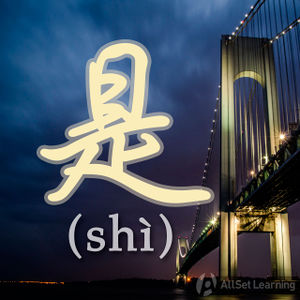Connecting nouns with "shi"
-
Level
-
Similar to
-
Used for
-
Keywords
\r\nThe verb to be is not used in Chinese the same way as it is in English. In Chinese, 是 (shì) is for connecting nouns, and is generally not used with adjectives. \r\n== Structure ==\r\nThe structure for connecting nouns with 是 is:\r\n
\r\nThis is equivalent to "Noun 1 is Noun 2" in English.\r\nChinese does not conjugate verbs. That is, the form of the verb is the same no matter who is doing it. In this case, it is always 是 and never changes. As you can see, it's easy to form simple sentences expressing to be in Chinese. \r\n== Examples ==\r\n
- 她 是 医生。She is a doctor.
- 他 是 老师。He is a teacher.
- 这 是 书。This is a book.
- 那 是 杯子。That is a cup.
- 她 是 我 的 老板。She is my boss.
- 这 些 是 红玫瑰。
- 那 是 你的礼物。This is your gift.
- 这 是 我的衣服。That is my clothes.
- 你 是 我的朋友。You are my friend.\r\n
\r\nBe careful though. As you can see above, 是 is only used to link two nouns. It cannot be used to link a noun and an adjective. This is a very common mistake for people just beginning to learn Chinese. For that kind of sentence, you'll want to use the linking word 很.\r\n==See also==\r\n* Word order



